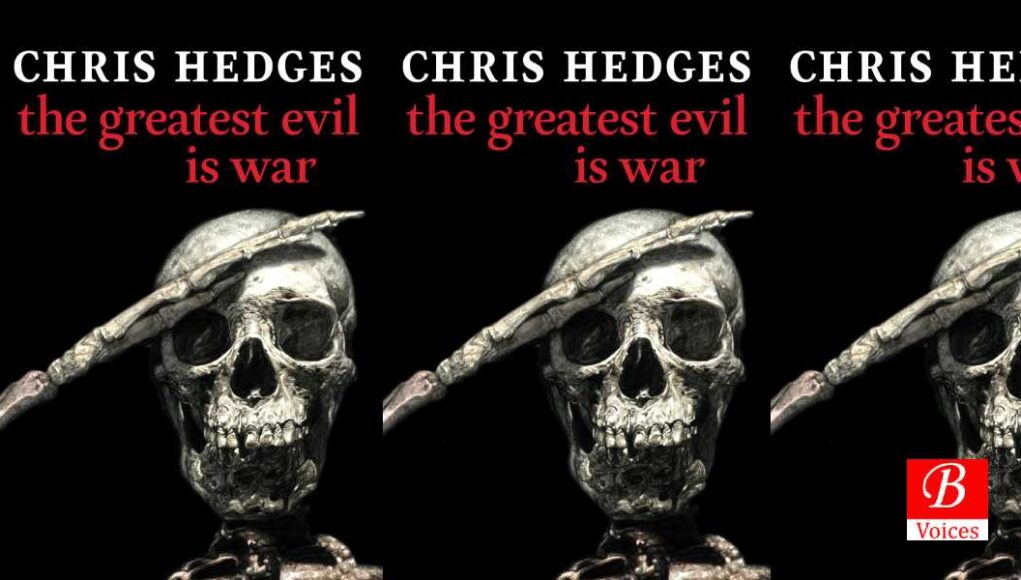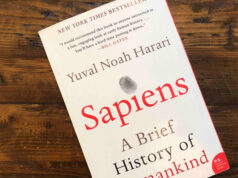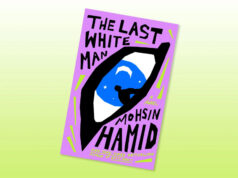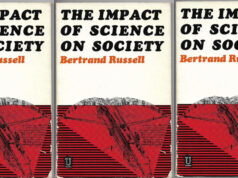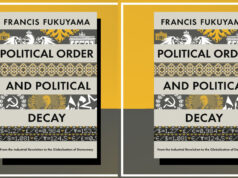Tahira Khan
When it comes to political violence, there is a great deal of philosophies, ideologies, and narratives to dissect the prospects and consequences. But, when it comes to war humanity fails to understand and justify the horror of consequences. One of the finest war correspondents, Chris Hedges, has probed the matter in the form of his new book titled “ The Greatest Evil Is War”. According to Chris Hedges, War has no future. It dehumanizes people and makes no sense.
Following that, the book doesn’t delve into moral and philosophical approaches toward war but documents the experiences and interviews of those families, communities, and nations who bore the brunt of war atrocities. The book consists of fifteen chapters where an argument is drawn to portray the horrors of war through the personal experiences of victims, veterans, parents, servicemen, and survivors.
Chapter I
The chapter details how the greatest evil of this world is war. It describes the demonic face of war and explains why war is not politics by any means. According to Chris Hedge, what happened in Afghanistan and Iraq was a war crime because preemptive war is immoral, illegal, and illogical that destroyed the countries to a larger extent. Besides, Preemptive war is a crime because it is based on lies. It is a crime even if it is carried out owing to the breakup of agreements like that in the case of Ukraine.
Following that, the chapter describes the biggest lesson of war. It suggests that war is blind when it comes to human body count. Huma either becomes numbers or just objects. Moreover, it is deaf because it doesn’t listen to human cries, pain, and agony. It only loves hearing the soaring sound of fighter jets or shooting or bomb blasts. In short, war through any lens is inhumane. Furthermore, the chapter focuses on the two main casualties of war I.e. truth and ambiguity. It is because of the first casualty that real war can’t enter the books. As far as ambiguity is concerned, one can not make sense of what happened during the combat and even after that. War manages to dehumanize people while the world outside of the conflict region remains blindfolded.
Chapter II
This chapter highlights how war is a healthy option for States. The author elaborates that war states require enemies to sustain and make an impression. In case there is no enemy then it is manufactured. More recently, this industry has manufactured a new enemy known as Putin. He is accused of waging war in Ukraine and having the ambition to get hold of Europe as well. Historically, it was Saddam Hussain who was a Nazi leader but now it is Putin. Whoever it may be, the media along with politicians and scholars point out how brutal and cruel that particular Nazi leader is and how they destroyed countries but don’t bother that they are adding more to the casualties of war I.e. Truth and ambiguity.
Chapter III
In this chapter, the author exposes the double standards of rulers who have divided the world into two types of victims I.e. worthy and unworthy ones. Worthy victims are those whose pain is considered pain and feeling pity is allowed. The loss of these victims can be presented even in exaggeration but the agony of unworthy victims is minimized and dismissed on several occasions. For example, when it comes to Ukrainians the world may feel empathy because they are bearing the burden of modern warfare but when it comes to Iraqis, Somali, Libyan, Yemeni, and Palestinian the world loses sense. They are painted as collateral damage which is inhumane. The rulers from the US to Russia may claim that they would not target the civilian population but it happens during the combat and it always happens.
In particular, war teaches how to paint one as good while the other as bad. The good ones explain the bad ones as war aggressors and add fuel to the fire of poisonous nationalism. In addition, these worthy victims manage to label war as some sacred and religious duty to abandon what is fact and adopt what is false. If the rulers of the world keep adopting this policy, there will zero space for what is called justice. In the same vein, if the international platform thinks Russia should be sanctioned for what it is doing in Ukraine then the US should also be sanctioned for what it did to Iraq. Whatever the country or whomever the ruler is, war is a business and a very lucrative one.
Similarly, whether it is Russia or the US, the primary responsibility of concerned authorities is to portray the human side of their militaries or to paint how blessed their objective is. But, they don’t bother to understand that the same portrayal has limited humanity to the body count only. If in case, there arises some criticism and objection, rulers tend to define how this criticism is anti-national and put questions of loyalty. This is the classic case of war states where rulers defy responsibility and put the critics and sane voices behind bars.
In the words of the author of the book;
“All of this remains unspoken as we express our anguish for the people of Ukraine and revel in our moral superiority. The life of a Palestinian or an Iraqi child is as precious as the life of a Ukrainian child. No one should live in fear and terror. No one should be sacrificed on the altar of Mars. But until all victims are worthy, until all who wage war are held accountable and brought to justice, this hypocritical game of life and death will continue.”
Chapter IV
In this chapter, the author details the pimps of war who justify the war in any way. They may include government officials, think tanks, media experts, and foreign policy analysts who act more like a warmonger than any expert. According to the author, the experts are either cynical or idiots or maybe both. But, they have contacts in the war industry who not only fund them but keep them in the limelight. This helps them to prove how to correct their theory or philosophy but hide the consequences of the same theories and philosophies.
Chapter V
In brief, this chapter explains the complex psychology of mass murderers. These killers could be warlords, death squad leaders, psychopaths, or professionals. The author has brilliantly painted when a mass murderer enjoys playing God and when he indulges in sadism. In a nutshell, mass murders show their hypermasculine features to an abnormal extent. In this chapter, the author also mentions the documentary of Joshua Oppenheimer which explain how a human being becomes a mass murderer and how human psychology accepts brutally killing fellow beings.
Chapter VI
During war or crisis, soldiers may become worthy victims but their tale is worth telling. They may have nationalistic or military pride, but they also die in a very inhumane way. That’s why, it is pertinent to document the agony and pain of soldiers Who are destined to bore the burden of war country after country and generation after generation.
In this chapter, the author details how Hollywood romanticizes the life of soldiers to cover the ugly truth of their lives. What these movies don’t show is how toxic military culture is and how soldiers endure this. The sole aim of any military culture is to degrade other people and if a soldier shows some feminine qualities it is considered a weakness. In brief, military culture is set to destroy things, and soldiers are psychologically designed in that system. It is not possible to convert the military setup into humanitarian work because by doing this, it will collapse. The military is the political muscle of the state. Although Military Generals may call themselves doing apolitical work this is a lie.
Chapter VII
Unfortunately, war does not kill humanity only but also puts the world into an existential crisis. When veterans and soldiers return home from war, they indulge themselves in another combat. This period of existential crisis questions everything a veteran has done in the past and is not simply a struggle against depression and mental agony. It opens the door to self-awareness where questions become nightmares. It also discloses the double standards of the religious and secular institutions whose foundations are based on helping humanity. Indeed, this self-awareness period also discloses the hollowness of nationalism and patriotism.
An existential crisis is a critical and exhausting period that tells veterans that are neither virtuous nor victorious. Besides, it also questions the nobility and the very purpose of war because, after every war, the only left output is destruction and lost purpose. Therefore, all patriotic scripts and prophetic calls become fabrications. This led to a new battlefield where the chances of being victorious and pious are not even present. How to win such a battle? The veterans don’t know and that is why it is called an existential crisis.
Chapter VIII
This chapter details what happens to the dead bodies during the war period. It quotes the words of Jessica Goodell who wrote her memoir in 2011 titled ‘Shade it Black: Death and After in Iraq”
“The smell of death permeated our clothes, hair, skin, and fingers. Our cammies would be stained with blood or with brains. When you scoop up the meat it often would get on the cuffs of our shirts. You could smell it, even after you took off your gloves. We weren’t washing our cammies every day. Your cuff comes to your face when you eat. We had a constant smell of rotten meat, which I guess is what it was since often the bodies had been in the sun and the heat for a long time. The sun does horrible things to dead skin. It makes the skin slide off the body; when the man is lifted, the skin detaches itself from the layer beneath and slides around on itself.”
Chapter IX
The previous chapter pictures what happens to the dead bodies during the war period whereas this chapter documents the pain of family when dead bodies are sent home. Families find it hard to even process the news of their loved ones whom they sent to battle to serve their nation. In the words of one of the victim’s family members;
“I tried to process this in my head. I never hear that. I remember how my body felt. I got a rush of blood in my body. I felt like it was the worst thing in my life. It is my worst fear. I could not believe what they were telling me.”
Chapter X
War gives wounds that will never heal. It is a constant battle where the victim always loses. This chapter documents the story of one of the veterans who died in 2014, aged 34. His name was Tomas. He believed the lies of nationalism and patriotism. He also believed the books that hid the truth and fed the poisonous literature.
Tomas Young was sent to the Iraq war in 2004. During the insurgent attack, he was paralyzed. He is considered one of the first veterans who opposed the Iraq war and his story is documented titled ‘Body of War’. Tomas fought with the mental and physical agonies that crippled him till he lost his fight against them.
Chapter XI
This chapter mentions two books 2nd Tour Hope: I Don’t Die and After War: Veterans from a World in Conflict to Enlist the dark shadows of War. It elaborates on how industrial warfare kills hundreds of people in seconds. It also paints the darker side of war where buildings are crushed and villages are demolished just to benefit the war industry. This industry idolizes tanks, jets, and fiery ships but doesn’t bother humans because it is just collateral damage. War objects are more petrified than humanity itself.
Chapter XII
The primary focus of this chapter is to debunk the myths attached to war such as heroism and selflessness. War has nothing to do with these false euphemisms. It only brings destruction and destroys not only countries but generation to generation. One of the myths associated with war is the British Imperial War Museum. It is the same myth that inspired Jackson to create a cartoon version selling the mythic reality of war and not how wars could be savage or brutal.
Mythic reality does not tell that combat brings physical and psychological torture. It vanishes the feelings of duty, manliness, and nationalistic pride. As per military studies, 98 percent of combatants develop psychiatric problems after serving 60 days in the field. The remaining 2 percent become psychopathic personalities. In a nutshell, either a veteran is mad or crazy even if he survives the shooting and blasts of the war. In this context, can madness or craziness be called heroism or selflessness?
Chapter XIII
In this chapter, the author details the objects which are created to justify past and future wars. These are called war memorials. They act more like temples where the god of war encourages humankind to show more heroism and selflessness because the nation needs it. These commemorations create mental images and distorted histories to turn soldiers into killers and places into bonfires.
Chapter XIV
In this chapter, the author describes how soldiers who died in any war are portrayed as heroes and how their descendants feel military pride. His words are as under;
“The war memorials implicitly celebrate nationalism and elevate the warrior caste. The cruelty and folly of war, along with the holocaust of slavery and the widespread grief and suffering caused by the staggering numbers of dead and wounded, are treated as tangential aspects eclipsed by the great sacrifice.”
Chapter XV
In this chapter, the story revolves around the horrors of the holocaust where the author emphasizes how narrow the line between a victim and an executioner is. It also focuses on the story of the parents of an orphan where love is shown as having the upper hand over hate. According to the author, love has the power to overcome hate.
Chapter XVI
Lastly, the book discusses the topic of permanent war in the form of the democratic movement. In this lieu, the author dissects how democracy can weaken the rich culture of any society. Moreover, democracy is also blamed to cheapen education, media, and the economy. In the words of the author;
“It was a decline into permanent war, not Islam, that killed the liberal, democratic movements in the Arab world, ones that held great promise in the early part of the twentieth century in countries such as Egypt, Syria, Lebanon, and Iran. It is a state of permanent war that is finishing off the liberal traditions in Israel and the United States.”
The writer holds an M.Phil Degree in South Asian Studies from the University of Punjab. She can be reached on Twitter @TahiraGhilzai.
Click here to read previous articles of the writer.
Disclaimer: Views expressed in this article are those of the writer and Balochistan Voices does not necessarily agree with them.
Share your comments!


